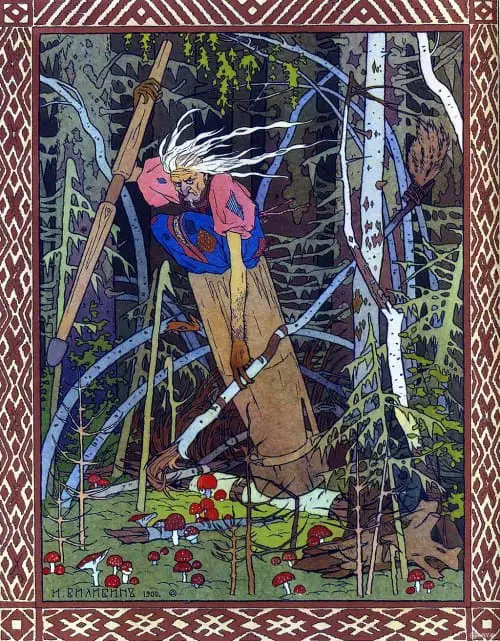Baba Yaga is a legendary Slavic witch, or a hag, who lives in a hut that stands on chicken legs and who flies through the air in a mortar, using the pestle as a rudder. The predatory Baba Yaga, who has a special liking for children, is a subcategory of crone. She’s also known as Old Hag Yaga. Her name is synonymous with ved’ma, which means witch in Russian.
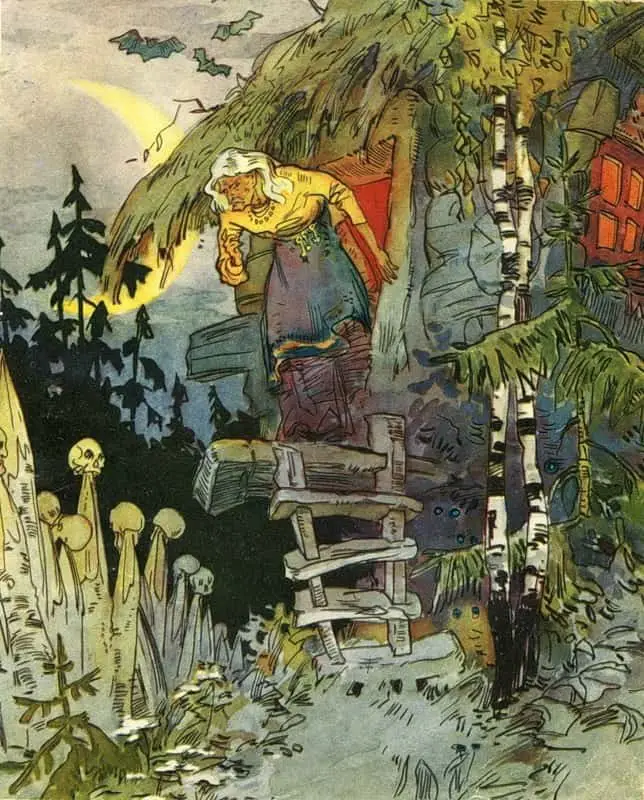
In Russian, Baba Yaga’s name is not capitalized. Indeed, it is not a name at all, but a description—“old lady yaga” or perhaps “scary old woman.” There is often more than one Baba Yaga in a story, and thus we should really say “a Baba Yaga,” “the Baba Yaga.” We do so in these tales when a story would otherwise be confusing. We have continued the western tradition of capitalizing Baba Yaga, since the words cannot be translated and have no other meaning in English (aside perhaps from the pleasant associations of a rum baba). There is no graceful way to put the name in the plural in English, and in Russian tales multiple iterations of Baba Yaga never appear at the same time, only in sequence: Baba Yaga sisters or cousins talk about one another, or send travelers along to one another, but they do not live together. The first-person pronoun “I” in Russian, ‘ia,’ is also uncapitalized. In some tales our witch is called only “Yaga.” A few tales refer to her as “Yagishna,” a patronymic form suggesting that she is Yaga’s daughter rather than Yaga herself. (That in turn suggests that Baba Yaga reproduces parthenogenetically, and some scholars agree that she does.) The lack of capitalization in every published Russian folktale also hints at Baba Yaga’s status as a type rather than an individual, a paradigmatic mean or frightening old woman. This description in place of a name, too, could suggest that it was once a euphemism for another name or term, too holy or frightening to be spoken, and therefore now long forgotten.
Sibelan Forrester, from her introduction to Baba Yaga: The Wild Witch of the East in Russian Fairy Tales
FEATURES OF BABA YAGA?
A BRIEF HISTORY OF BABA YAGA
The first extant mentions of Baba Yaga in text date to the 18th century.
Sometimes ‘Baba’ is translated into English as ‘Granny‘ but the word ‘baba’ contains no respect for age. A closer translation would be something like ‘crone‘, even though ‘baba’ is a shortening of the respectful ‘babushka‘ (grandmother). A minor insult is “Babka”, meaning a grumpy old woman.
She might be a chthonic goddess. (Chthonic means relating to or inhabiting the underworld.) Vladamir Propp proposed that her house on legs might serve as a cultural memory of initiation rituals.
‘Yaga‘ may be related to Slavic words for grudge or brawl, or to the Russian word for eating.
Baba Yaga may be a genius loci (protective spirit). On the other hand, she doesn’t appear to be a protectress of specific social groups. She’s not their enemy, either.
BABA YAGA’S BACK STORY
Femme coded monsters in general have backstories in which they become monsters because of masculine brutality and injustice.
BABA YAGA AND YOUNG PEOPLE
Cannibalism more generally is related to pregnancy, and our collective fear around it. (Before people had a good understanding of human anatomy, a pregnant woman appeared she had eaten someone.)
Baba Yaga is connected to children, first because she eats them, second because in some stories she has daughters (but never sons). Actually, though, in the classic Baba Yaga stories, she never actually eats the children. She threatens to. She also teaches the girls to do housework. She is a tool in a young person’s rite of passage into adulthood. In this way, Baba Yaga fulfils a specific cultural function: She teaches young people traditional values and rules of adult society so that they will grow up to be useful, functioning members of it. How does she select her victims? She preys upon those who deviate in this way.
She’s the slavic folktale equivalent of the Aunt Lydia character invented by Margaret Atwood in The Handmaid’s Tale, upholding the social norms of her own oppressors.
CONNECTION TO OTHER SUPERNATURAL CREATURES
In Russian imagination she is the aunt or mistress of all witches. She is sometimes compared to Hecate, the Greek goddess of magic, witchcraft, the night, moon, ghosts and necromancy.
Like your bog standard witch, Baba Yaga is cunning. She’s in control of natural and supernatural magic and above all of food supplies. She dispenses hospitality capriciously: Sometimes she’s welcoming, other times wants you to leave her the hell alone.
Here’s what Jack Zipes has to say about her:
[She is] not just a dangerous witch but also a maternal benefactress, probably related to a pagan goddess. [She] is inscrutable and so powerful that she does not ow allegiance to the Devil or God or even to her storytellers. In fact, she opposes all Judeo-Christian and Muslim deities and beliefs. She is her own woman, a pathogenetic mother, and she decides on a case-by-case basis whether she will help or kill the people who come to her hut that rotates on chicken legs.
Jack Zipes
(Pathogenetic: Pertaining to genetic cause of a disease or an abnormal condition.)
Sometimes she is said to be the mother of dragons.
BABA YAGA’S HOUSE
Her house is in the forest. More specifically than that, it’s in the land of the “thrice-nine kingdom“, the land of the living dead. This realm lies between the world of the living and the thrice-ten kingdom, the land of the truly dead.
Baba Yaga is unusually specific for a fairy tale character — she is often individuated. In fact there is something very specific and unusual about her: She lives in a woodland cottage that runs about on chicken legs.
She sets snapping teeth on her door for a lock, with hands to bolt it and human limbs to support it. Tiles are made of pancake, the walls of pies. A big oven blazes in the hearth where she sleeps at night.
Also, she fences her domain in the forest with the skulls and bones of her victims whose eyes glow by moonlight. (The skulls are used to decorate the pickets of the fence.)
HOW DOES SHE GET ABOUT?
Baba Yaga also has an unusual mode of flight. She ferries through the air in a pestle and mortar, sweeping her tracks with besom as she goes. (The pestle is the rudder.) Sometimes she travels in a flying cauldron. In her wake, tempests, hurricanes and tornadoes boil and roil.
RELATED TALES
This tale is a close cousin of the witch from Hansel and Gretel. Clever children are able to trick her.
Witch can have several meanings and exist on several axes. What’s the gender inverse of witch? Sometimes wizard (magic), sometimes ogre (gruesome).
She has witchy traits. When we say Baba Yaga is the equivalent of a witch, she’s the kind of witch who corresponds to the female ogre.
She can take shape of bird or cat (a sexist trope which predominates throughout all types of modern literature). This shows how very old is the tendency to link femininity to birds and to cats.
Sometimes, occasionally though, Baba Yaga is just a regular old woman, like the queen of Snow White.
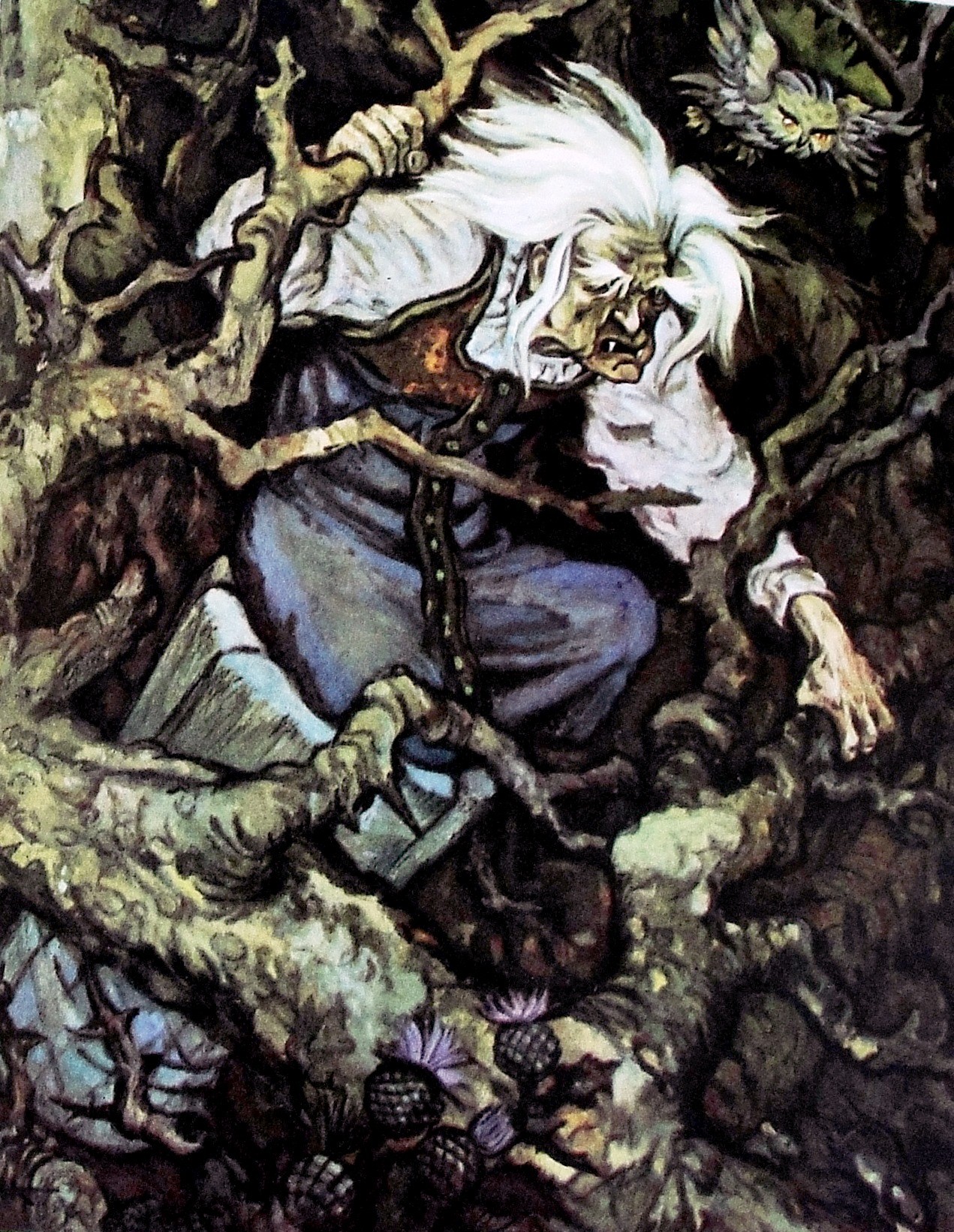
THE DUALISTIC WOMAN
Baba Yaga is not always malignant. In fact, she is notoriously ambiguous, giving rise to the archetype of the dualistic woman. Her cottage can be considered a liminal space, functioning as a sort of portal between the light and the dark sides, or the border between life and death. She can swing in either direction.
One of the best-known and strangest characters (from a Western perspective) in Russian [Slavic] folk tales is a witch called Baba Yaga. According to Elizabeth Warner, there are two Baba Yagas, a good one and a bad one. Sometimes within a single narrative, Baba Yaga may display good and evil characteristics. She benignly feeds the hero in “little Ivan The Clever Young Man,” for example, and provides him with a “hot steam-bath,” but threatens to devour Vasilisa the Beautiful. Baba Yaga lives in a dense and dark forest in a cottage built on chicken’s legs that revolves on command. She is an aged, ugly crone and her nose and teeth are long and sharp. Not only is she emaciated like a skeleton, but the fence and gates of her house are built of human bones. According to Warner, “some scholars say” that Baba Yaga’s house guards the frontier between the mortal and spirit worlds.
Carolyn Davis, Voracious Children: Who Eats Whom In Children’s Literature
If you’d like to hear “Vasilisa the Beautiful and Baba Yaga” read aloud, I recommend the retellings by Parcast’s Tales podcast series. (They have now moved over to Spotify.) These are ancient tales retold using contemporary English, complete with music and Foley effects. Some of these old tales are pretty hard to read, but the Tales podcast presents them in an easily digestible way. “Vasilisa the Beautiful and Baba Yaga” was published September 2020.
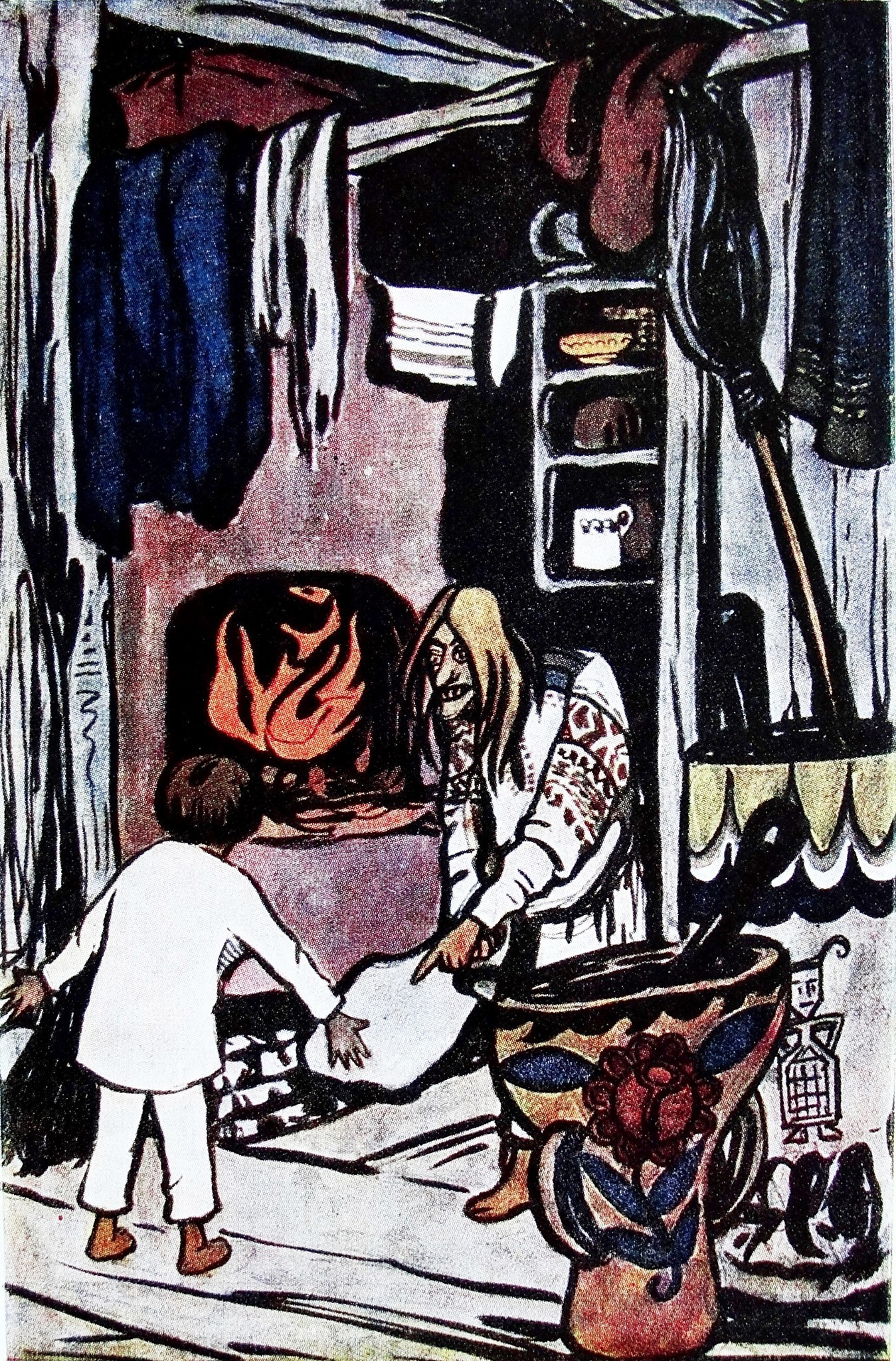
SIMILARITIES TO HANSEL AND GRETEL
Baba Yaga, like Hansel and Gretel’s adversary, has a penchant for human flesh and kidnaps small children. Vasilisa escapes from Baba Yaga’s clutches because she has her “mother’s blessing” to help her, embodied in a doll which advises her and performs the tasks set her by the witch. When Baba Yaga finds out that Vasilisa has been blessed, she sends her home to her stepmother and stepsisters unharmed and with the light they had sent her to fetch. The light given to Vasilisa by the witch is contained in a skull stuck on a pole. The blazing eyes of the skull stare straight at the stepmother and her daughters. “They tried to hide but everywhere they went the eyes followed them. By morning they were shrivelled to a cinder and only Vasilisa was left”. Vasilisa subsequently takes a room with an old woman and waits for her father to return from his business trip. With the doll’s help, she spins a quantity of fine linen thread, weaves a cloth “so delicate it could be drawn through the eye of a needle” and sews twelve shirts for the Tsar. The Tsar is delighted with her work and invites the seamstress to his palace, falls in love with her and asks her to marry him. When Vasilisa’s father returns he is overjoyed to hear of the good fortune that has befallen his daughter. He and the old woman, with whom Vasilisa has been living, come to live in the palace.
The trajectory of the story of “Vasilisa the Beautiful” is similar to that of Hansel and Gretel in a number of ways. Just as they did, Vasilisa must come to terms with the dualistic nature of the mother figure and develop a meaningful relationship with her father/the symbolic order. Her stepmother expels her from the house and sends her into the forest, just as Hansel’s and Gretel’s did, and her stepmother and the witch figure also epitomize the bad breast/mother figure. For Vasilisa the doll embodies the blessing or loving and nurturing aspects of the mother, while the stepmother/witch again represents the evil, cannibalistic characteristics. Vasilisa is not lured into Baba Yaga’s house as Hansel and Gretel are, however. Instead, she recognizes the threat the house and the witch represent but must still approach and comply with Baba Yaga’s commands, fulfilling the onerous tasks she sets. Thus, Vasilisa must face up to the deal with that which she fears just as Maggie Kilgour suggests the infant must do in relation to the breast. The step/mother is again dealt with through matricide but Vasilisa retains the best parts of the mother figure in the body of the doll, which she carries “in her pocket until the day she dies”. Arguably Vasilisa has reconciled with her ambivalent feelings toward her mother who is then reclaimed in the figure of the old woman. Again in this story, economic wealth is associated with the paternal and provides a happy ever after ending.
Carolyn Davis, Voracious Children: Who Eats Whom In Children’s Literature
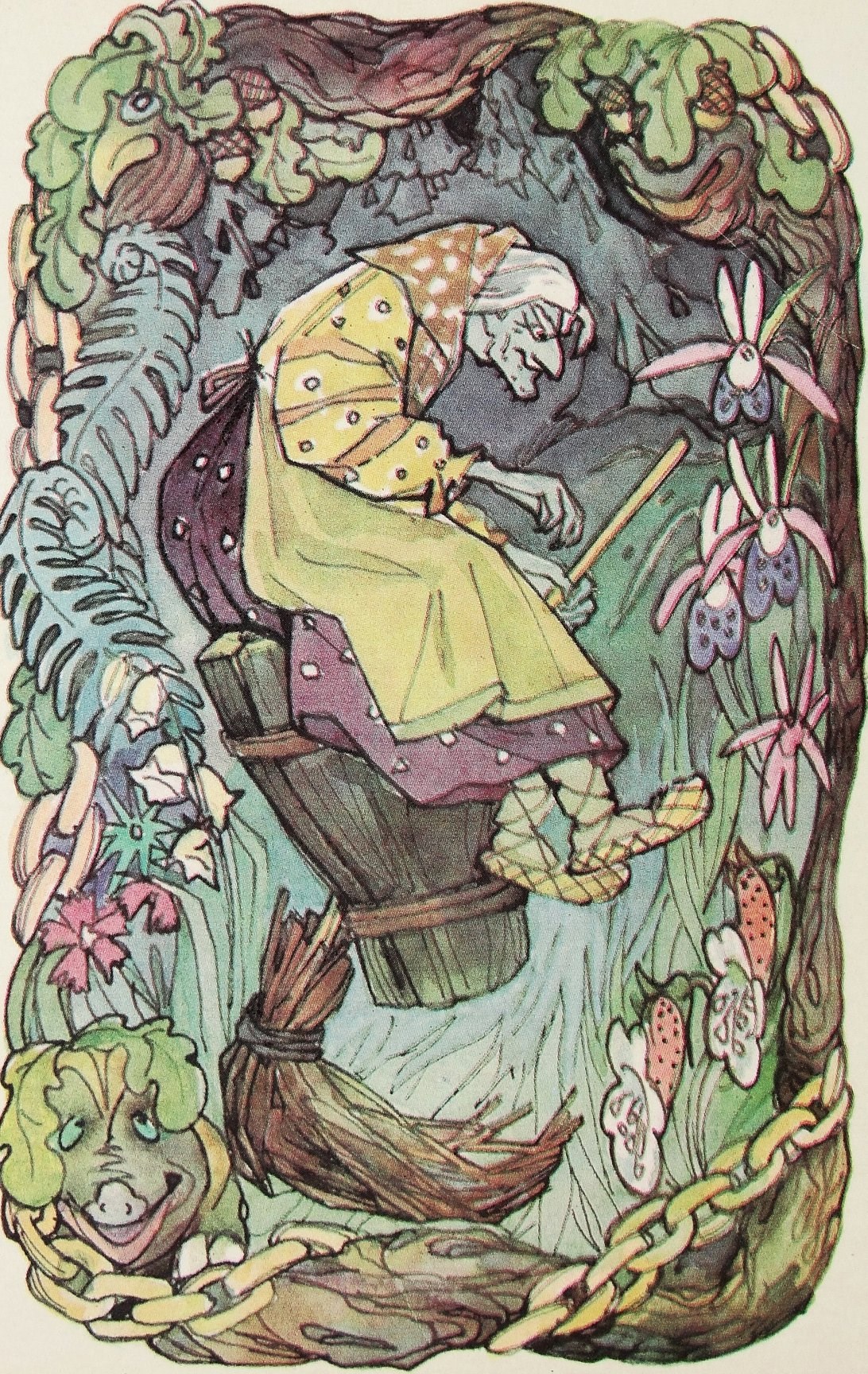
BABA YAGA IN JAPAN
Being a bit of a Japanophile, I can’t help but notice how popular the tale of Baba Yaga is in Japan. Here in the West, I grew up without ever hearing of such a folktale, but in Japan you might see its influence all over the place.
It was Diana Wynne Jones (British) who wrote Howl’s Travelling Castle upon which the anime is based but I can’t help but think of Baba Yaga when I see Hayao Miyazaki’s version of it on the big screen.
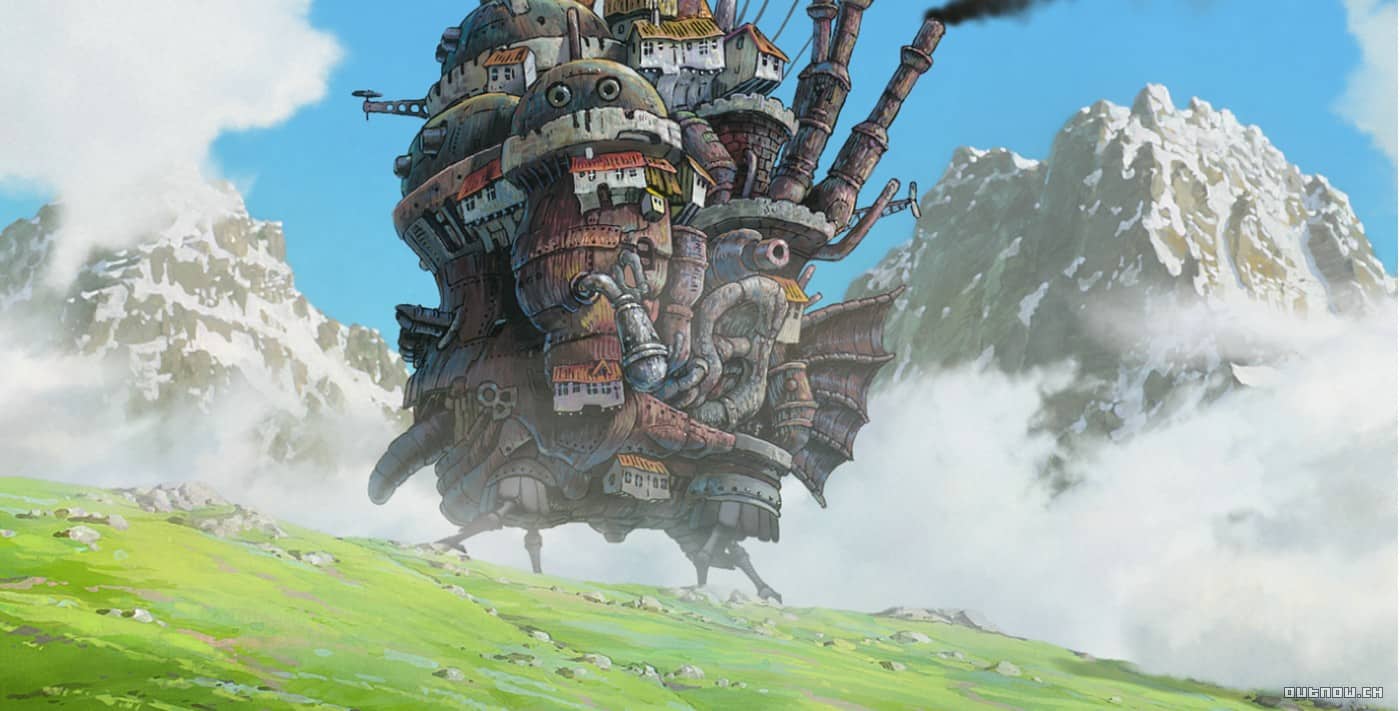
Miyazaki includes the character Baba Yaga in Mr Dough And The Egg Princess, which apparently you can only see screening at the Ghibli museum in Japan.
For more examples of houses on legs, see here.
Some people think that Baba Yaga equals the Yubaba in Spirited Away. I can see how they got there — Yubaba does fly away, after turning into a creepy crow. There is a good and an evil version of her. Interestingly, the proto-Slavic word for grandma ‘baba’ may simply be coincidentally phonetically similar to the Japanese ‘Baba’, which also comes from the native Japanese word for grandmother/old woman (obaasan). It’s important to note that Baba is a derogatory term. I believe it’s derogatory in both the Japanese and in the Slavic. But Baba is not a loanword in Japanese. In fact, it’s listed here, in a list of native Japanese words often thought to be from abroad. It may have been this very phonetic correspondence that spurred Hayao Miyazaki’s imagination when it came to the creation of Yubaba. It’s a false cognate, but in Japanese the word baba also refers to an old hag. The worst thing you could call a woman is a kusobaba — a ‘shit crone’.
There is no direct equivalent of Baba Yaga in Japanese folklore, but indeed, the Japanese do not need her because they have a lengthy list of weird folkloric creatures of their own. I can only deduce that Baba Yaga fits in well with the weirdness, hence Studio Ghibli’s fascination for her. Japan does have a fire breathing chicken type thing and ghosts that eat corpses. Then there’s the bird-demon created from the spirits of freshly dead corpses.
Here’s a more in depth look at some similarities between Slavic and Japanese folkloric old ‘hags’.
Mythological cannibals don’t seem to be all that common in other cultures. I expected the Wikipedia category to be much bigger in fact. Perhaps Russia and Japan are historically more similar than I’d thought?
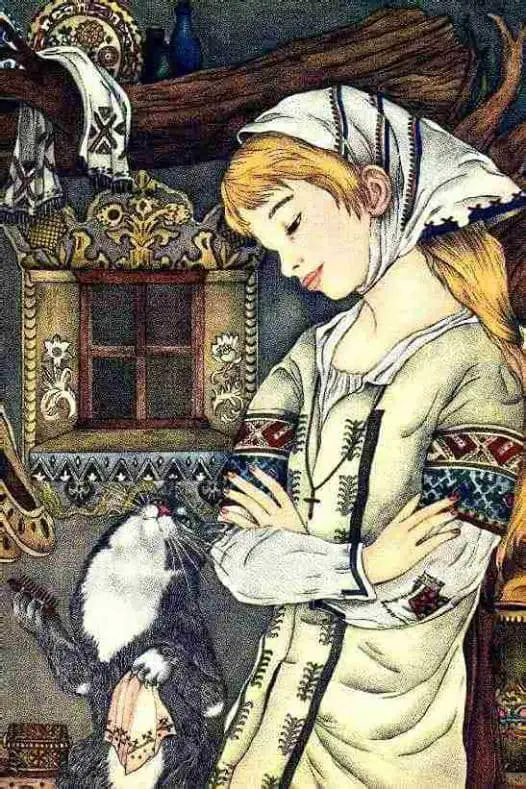
Happy dreams. Once Upon A Blog Baba Yaga
